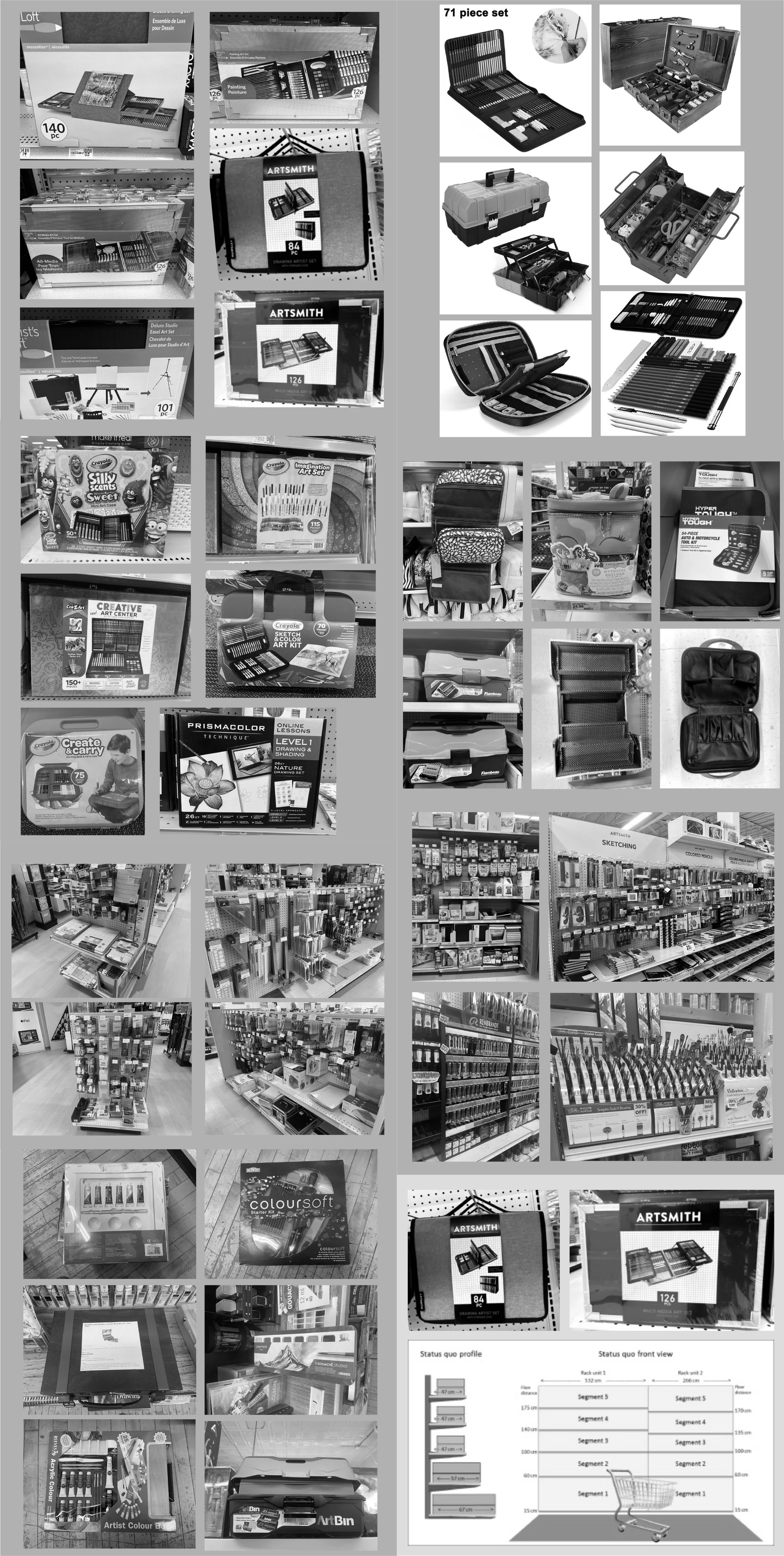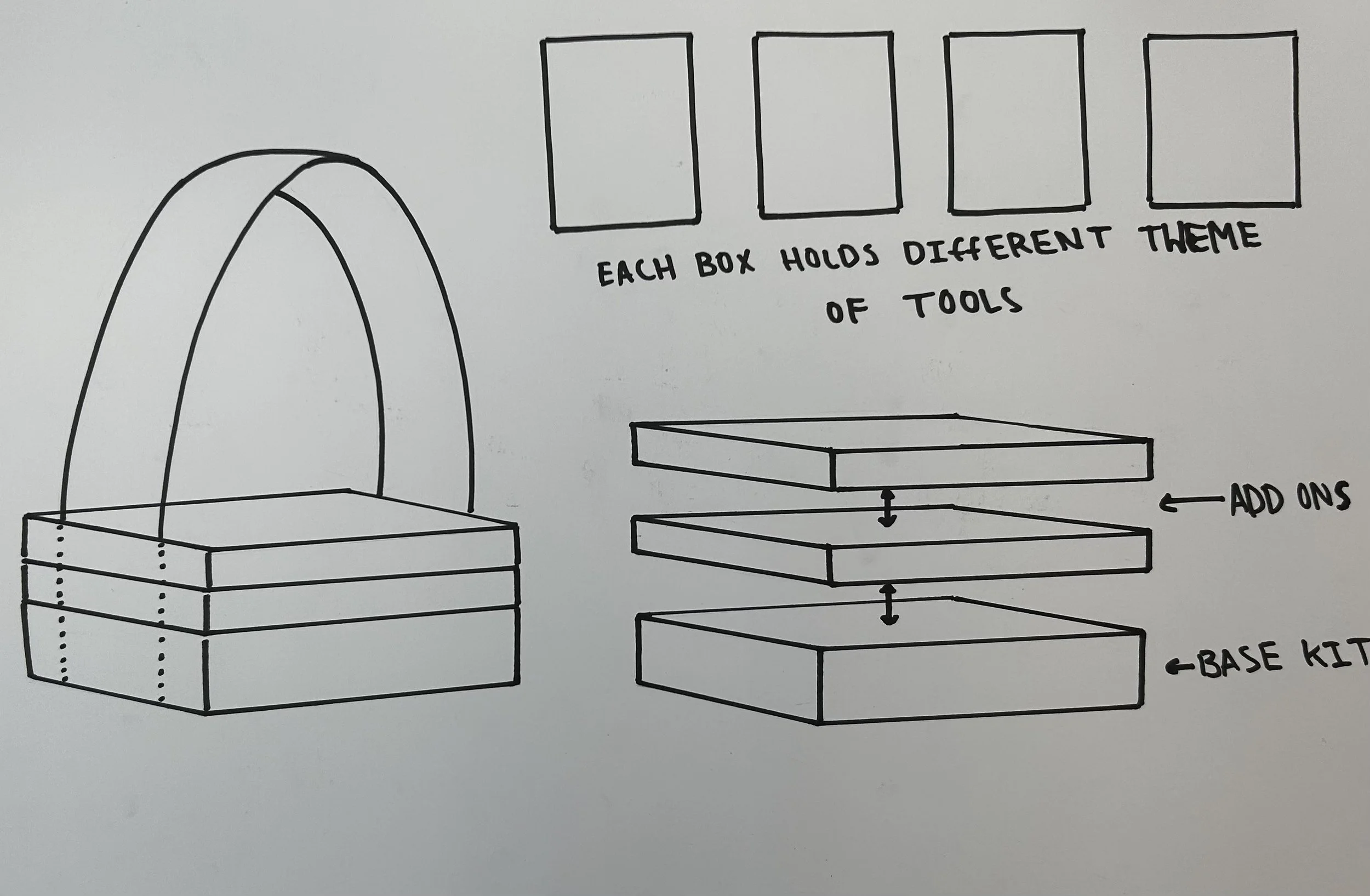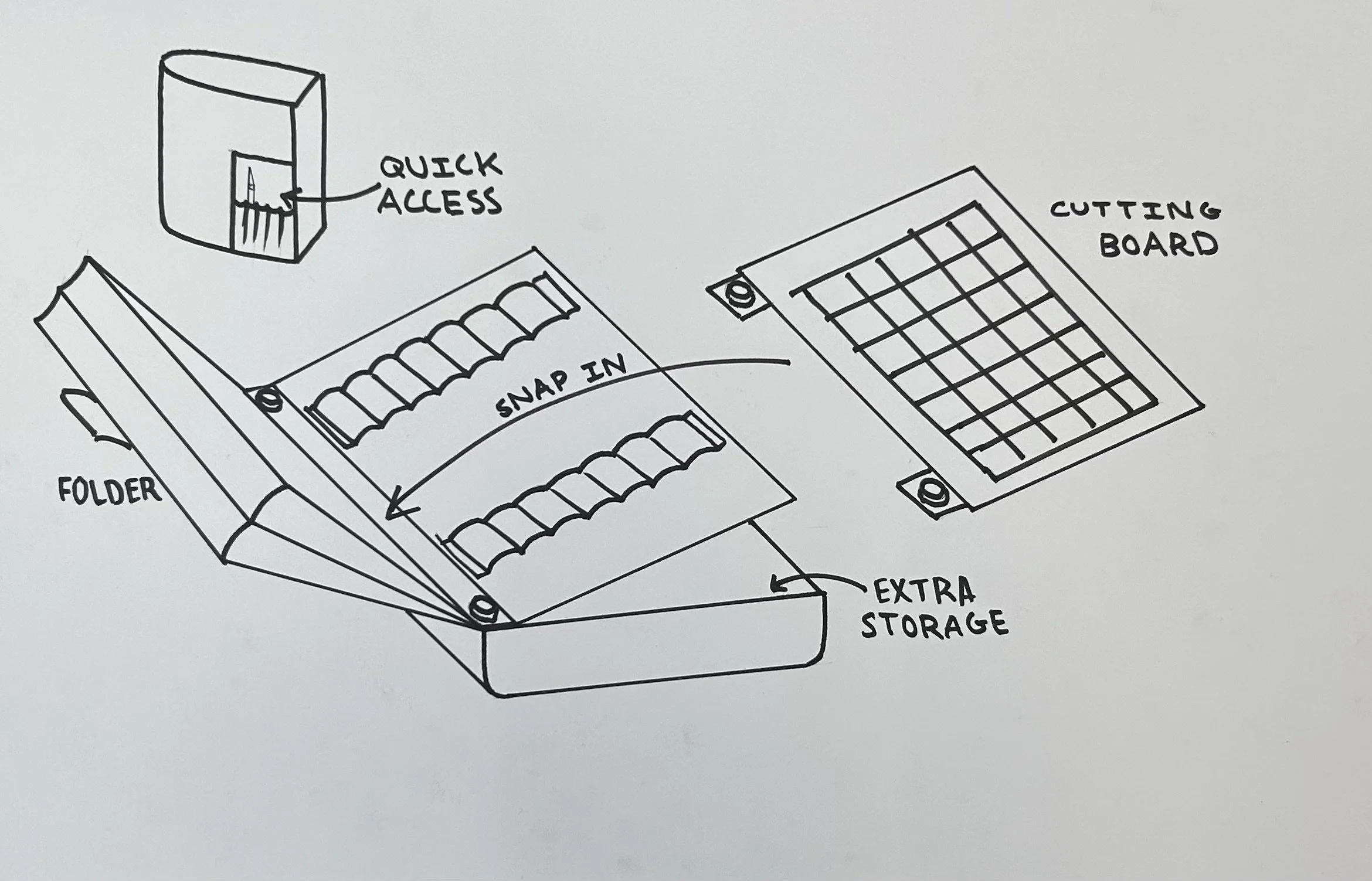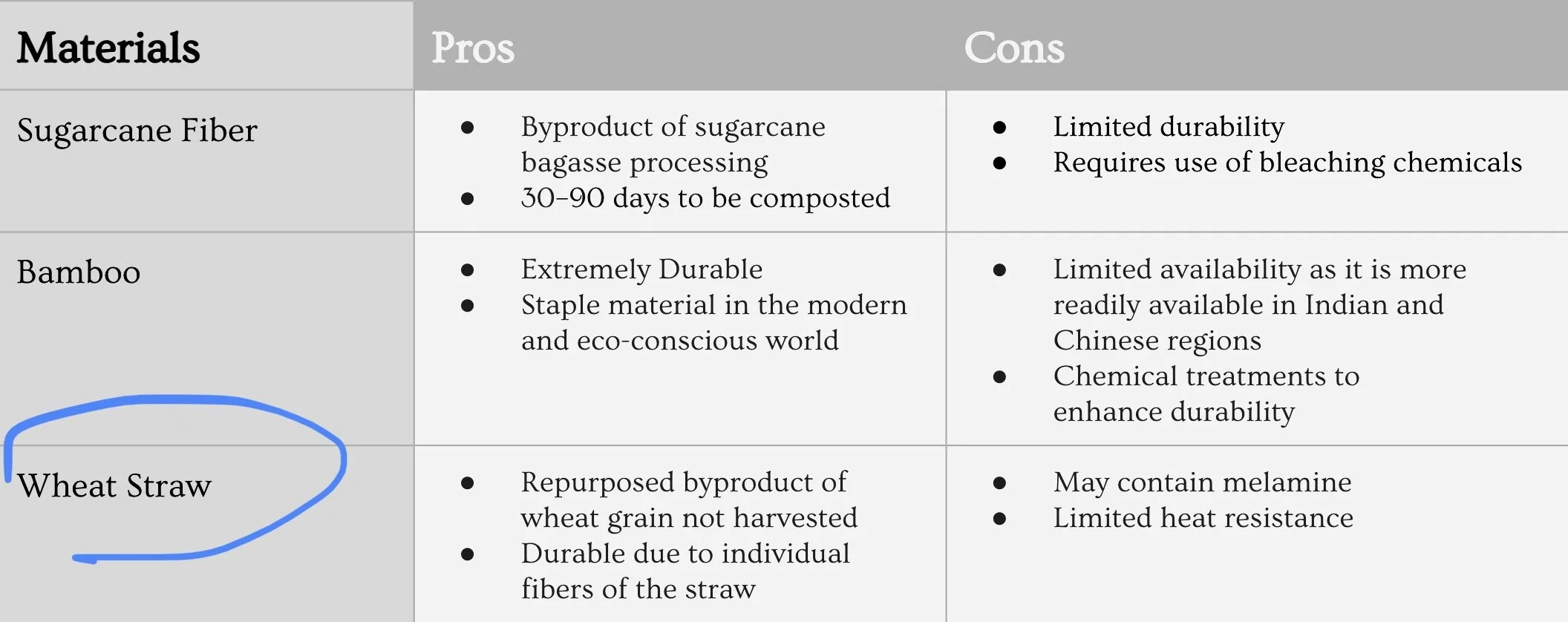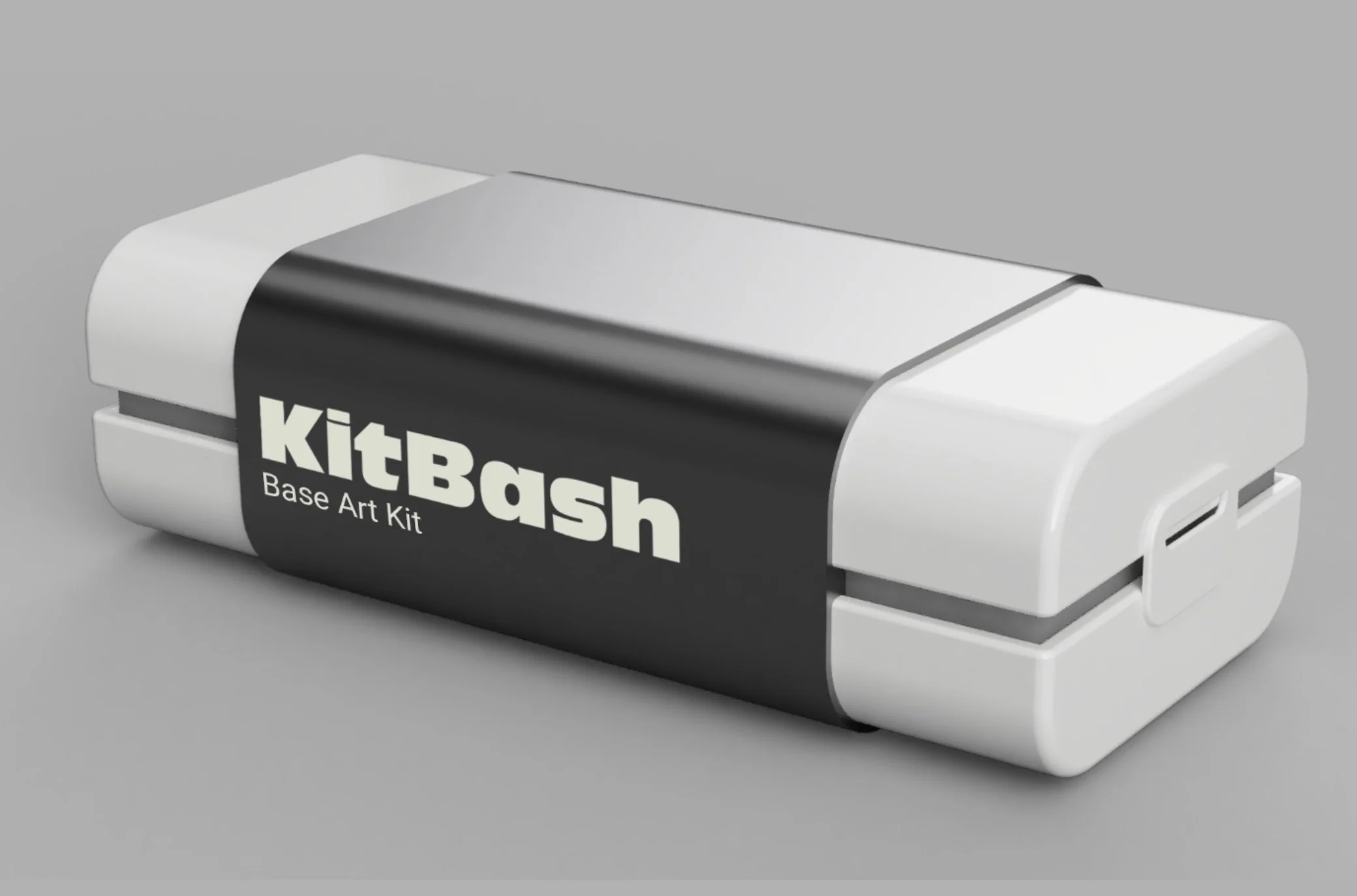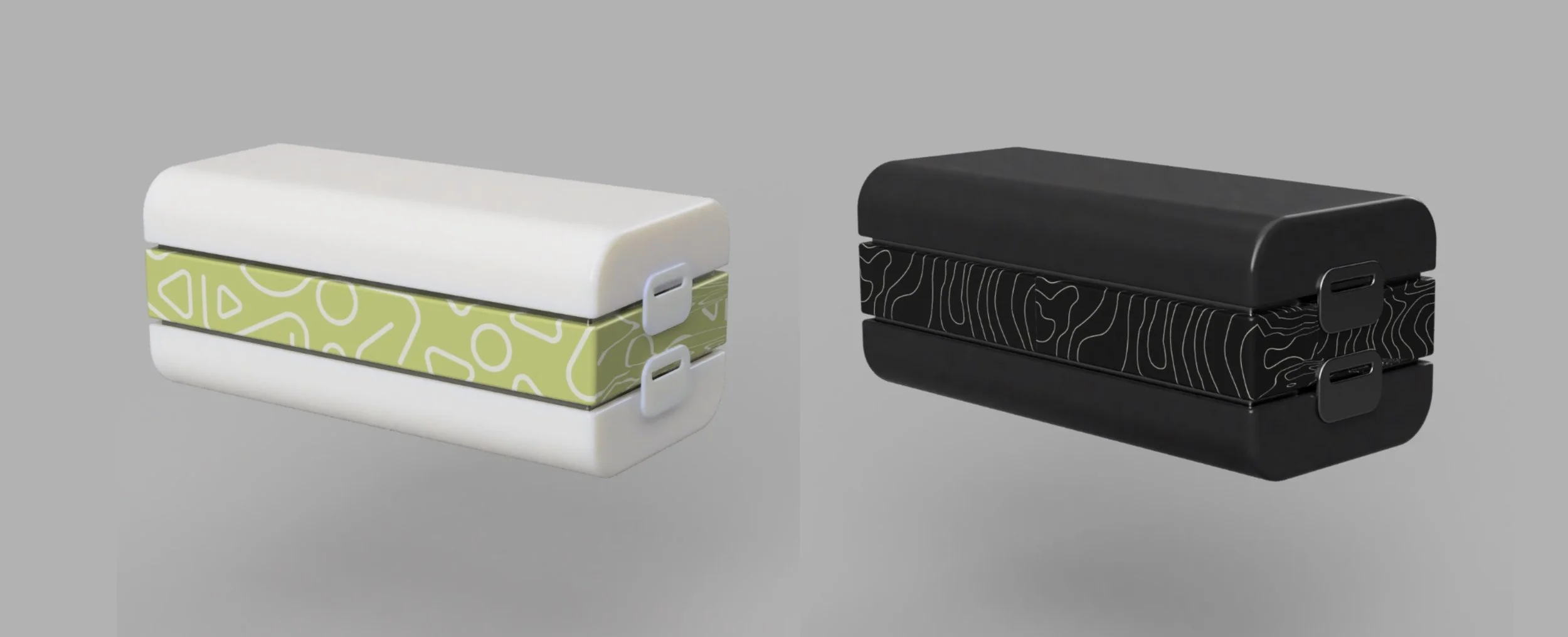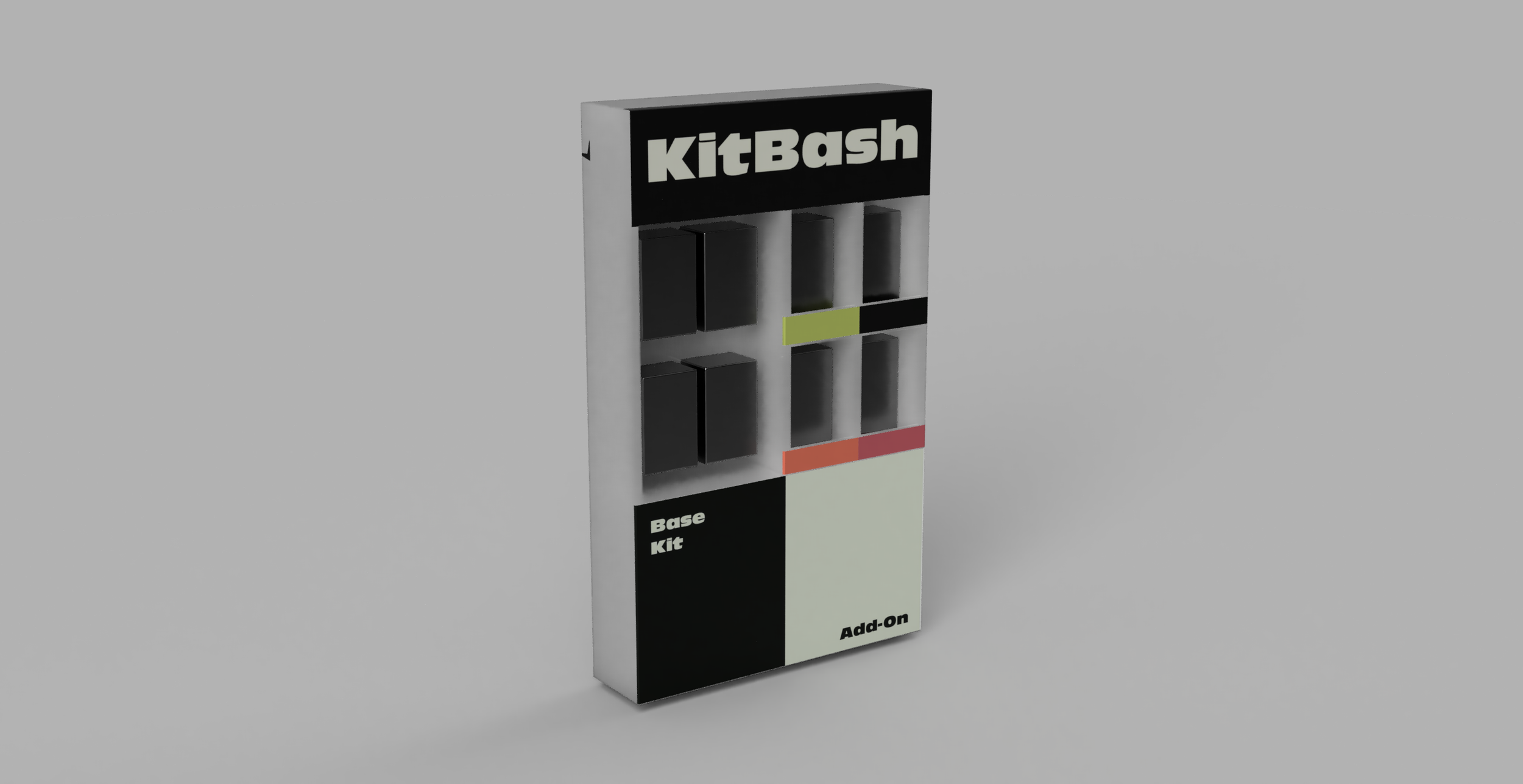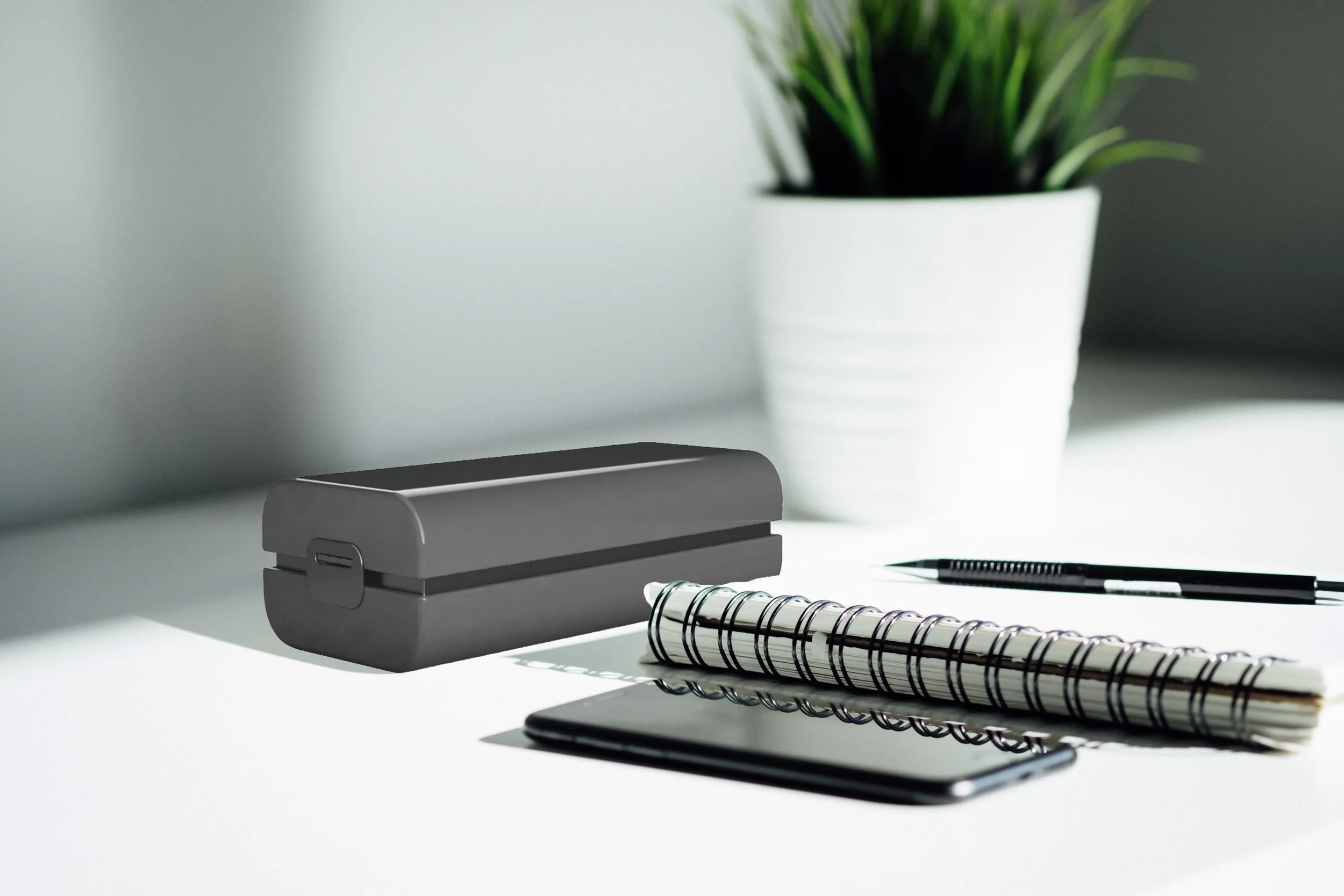
An art kit you’ll actually use
KitBash - Process & Background
Scroll ↓
Our next step was to survey design students to get a better understanding of the different perspectives on buying supplies. We found that students:
Spend $300+ on supplies
Use supplies they already have
Unsure what supplies they need
Not buying school art kit
Then we started Ideating
This was the start of the modular nesting concept that we ended up further exploring.
This brought us to our two potential concepts:
The Bento - Modular
The bento concept clearly aligned with our background findings, as it allowed the consumer to customize their art kit rather than making one big purchase. This is possible by providing a base kit with basic supplies everyone can use along with additional kits for specific classes/areas.
Before we continued, we researched what types of bento box’s exist and what materials are used to get inspiration for our kit.
Simplify and demystify the art supply buying experience for incoming freshmen design students & focused high school students.
Our direction was heavily inspired by this quote from one of our survey responders about why they didn’t buy the RIT Art Kit:
“I already had some of the required supplies, so I thought I could save money by buying [things] individually.”
This perspective seemed to be popular, so we knew our design would need to work around supplies the student already has, giving them the ability build their own kit.
Colorways
Base Kit
Point of purchase display
How do we create a starter art kit that adapts to students needs, not just for their foundations classes, but for use throughout their college art career?
Our store audits revealed that most products on the market weren’t what our audience was looking for. We found:
Specific drawing or painting kits
Made for children
Low quality supplies
Temporary storage
Unsustainable materials
The Folder - All in One
Kit with add-on
Form Ideation
Final Form
Our goal was to develop a foundational kit containing general supplies, complemented by modular add-on kits featuring specific themes. This approach empowers students to construct and tailor their kits precisely to meet their unique needs.
We kept the design minimal to prevent it from clashing with the designers style. However, if the student wants to customize their kit, they can with stickers or doodles, like a water bottle or computer.
Branding
Material Choice
We researched a few natural biodegradable material options (sugarcane fiber, bamboo, wheat straw). Physically they all work and are sustainable. However, wheat straw is cheaper while providing the same qualities as the other options.
